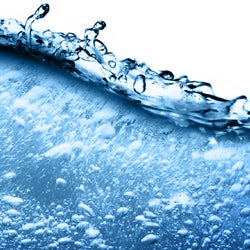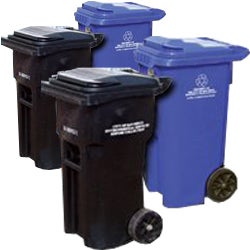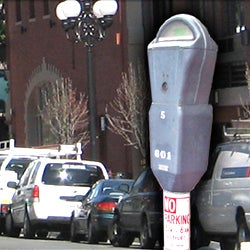Water Saving Tips

City and state year-round permanent mandatory water use restrictions have been put in place to help San Diegans make water conservation a way of life. Still, many residents want to do more, above and beyond the permanent mandatory restrictions. This page contains many simple tips to help you save water.
Check for Leaks
One of the most common reasons for a suddenly high water bill is an undetected leak on your property. Finding and repairing water leaks on your property can save you water, which means you save money.
Outdoors
As much as 60% of the water California residents use is for outdoor irrigation. Reducing outdoor water use can result in big savings.
- Replace your lawn with drought-tolerant landscaping. Visit your local nurseries, the City-sponsored Water Conservation Garden and the California Native Plant Garden in Balboa Park for ideas and inspiration. Also, see our Rebates page to save money on turf replacement.
- Install rain barrels, rain gutters and downspouts to redirect rainwater for your outdoor irrigation needs. See our Rebates page for more information.
- Set lawn mower blades one notch higher since longer grass reduces evaporation. Leave grass clippings on your lawn as this cools the ground and helps hold moisture.
- Mulch, compost and wood chips are reliable, cost-effective products for water retention, erosion control and weed suppression. They're available at the City's Miramar Greenery.
- Don't let your children play with the hose, wasting water. Instead, cool off by visiting one of the City's public pools or one of our many beaches.
- If you have a swimming pool, use a cover to cut down on evaporation. This will also help keep your pool cleaner and reduce the need to add chemicals.
- A graywater system is an excellent way to recycle and conserve using wastewater from bathtubs, showers, bathroom washbasins, clothes washing machines and laundry tubs for landscape irrigation. For permitting requirements, click here.
Laundry
 A lot of water is used when we do laundry. The average clothes washing uses about 30 gallons per load and older models can use more than 40 gallons per load. But there are several ways we can use water more efficiently when washing our clothes.
A lot of water is used when we do laundry. The average clothes washing uses about 30 gallons per load and older models can use more than 40 gallons per load. But there are several ways we can use water more efficiently when washing our clothes.
- When doing the laundry, never wash less than a full load.
- Remove clothes from your washer promptly to avoid having to rinse or wash them a second time.
- Many washing machines have an option for an extra rinse cycle. Most times when you wash clothes you can skip this step and save water.
- If possible, invest in a high-efficiency clothes washer. For rebates, visit BeWaterWise.
- Install a graywater system to reuse water from your washing machine.
-
See the EPA's Water Efficiency Management Guide for details about Energy Star-labeled clothes washers that save energy and water.
In the Bathroom
With sinks, bathtubs, showers and toilets, we use a lot of water in our bathrooms. There are several ways to reduce the water we use and reduce waste.
- Replace your older model toilets with new ultra-low-flush models. See the EPA's website for details about WaterSense-labeled products.
- Check your toilets for leaks. Drop a dye tablet or a teaspoon of food coloring (avoid red) in the toilet tank. If the color appears in the bowl after 15 minutes, you probably need to replace the "flapper" valve.
- Flush the toilet only when necessary. Never use the toilet as an ashtray or wastebasket.
- While waiting for hot water to come through the pipes, catch water in a bucket or watering can. You can use it later to water plants, run your garbage disposal or pour into the toilet tank to flush.
- Replace your regular showerheads with low-flow showerheads. See the EPA's website for details about WaterSense-labeled products. Keep your showers to five minutes or less using a low-flow showerhead.
- Turn off the water while lathering up in the shower, and then turn the water back on to quickly rinse.
- Take shallow baths in no more than 3 inches of water.
- Never let water run from the faucet while brushing your teeth or shaving.
In the Kitchen
By using water wisely, you can save up to 1,000 gallons a month in your kitchen.
- If you have a dishwasher, run it only when you have a full load.
- Hand wash dishes just once a day using the least amount of detergent possible and a dishpan instead of running water. Use a sprayer or short blasts of water to rinse.
- Scrape food scraps off dishes into the garbage can or rinse them off with very short blasts of water.
- Never use hot, running water to defrost frozen foods. Plan ahead and place frozen items in the refrigerator overnight or use a microwave oven to defrost them.
- Rinse vegetables and fruits in either a sink or pan filled with water instead of running water. Collect the water you use for houseplants.
- See the EPA's Water Efficiency Management Guide for details about Energy Star-labeled dishwashers that save energy and water.























